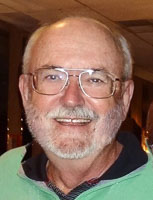Home > Topics > Printing > Epson Printers > Mark Segal’s Review of P900 has Been Posted
Mark Segal’s Review of P900 has Been Posted
-
AuthorTopic: Mark Segal’s Review of P900 has Been Posted Read 22940 Times
-
Epson Printerson: December 7, 2020 at 8:48 pm
Mark,
I’ve just seen that your PhD thesis on the P900 has been published. What a spectacular piece of work. No, not the printer. Your review. I’m curious about your level of effort in this. Can you estimate how many hours you spent in first, doing the research/testing and then in producing the article. What a generous contribution of your time. Tomorrow I’d setting aside a couple hours to digest it. </span></p>
Thank you so muchBrad Smith
-
This topic was modified 3 years, 7 months ago by
 Brad Smith.
Brad Smith.
-
This topic was modified 3 years, 7 months ago by
 Brad Smith.
Brad Smith.
Re: Mark Segal’s Review of P900 has Been PostedReply #1 on: December 7, 2020 at 9:04 pmHi Brad, thank you very much. Let me just say that the commitment of time was “substantial”. I received the printer on October 16th and finished laying it out on the website late last night. I didn’t keep track of time, but I’d say several hours a day over a six week period. There was lots of new stuff to deal with, multiple options for print settings, then all the mechanical stuff, the new or revised applications, new wireless capability etc., etc., and each aspect needed to be tested and written up. As well, inevitably I had some issues along the way that needed to be ironed-out, and for that I had the benefit of very forthcoming support from Epson America. The process of creating it was that I developed the article in tandem with completion of testing on each item, then reviewed the whole thing for coherence and sent it to several knowledgeable peer reviewers for feedback on any significant errors or omissions, followed by a final tidy-up and lay-out on the site.
Re: Mark Segal’s Review of P900 has Been PostedReply #2 on: December 7, 2020 at 10:52 pmMark,
Thank you for such a superb piece of work–as luck would have it my printer arrived late afternoon. It is still in the box. I will study your article tomorrow and pay attention as I install it later on this week. I cannot wait to get started…..
William Sharwell
Re: Mark Segal’s Review of P900 has Been PostedReply #3 on: December 7, 2020 at 11:30 pmI wish you a good time with the printer William. The one thing that can’t be shared over the internet is actually hand-holding the gorgeous prints it makes.
Re: Mark Segal’s Review of P900 has Been PostedReply #4 on: December 8, 2020 at 5:08 pmMark,
Thanks for the great and detailed review. I have a couple of questions about printing from the IOS Print Layout App.
1.) If you are using a non-Epson paper (Red River) and the Under Color Settings you select -Use ICC Profile, which profile does the printer select? I have downloaded the profile to the printer and select the profile when I please the paper in the printer. Does the printer then automatically use this profile? I do n not see any way to manually select the profile in the IOS app.
2.) If you are editing of a photo on an IOS device have you established how to adjust the brightness of the screen so that the brightness of the photo is reasonably accurate.
Thanks,
Mickey
Re: Mark Segal’s Review of P900 has Been PostedReply #5 on: December 8, 2020 at 5:24 pmIf you had used the Epson Media Installer (EMI) to register your third-party media as a new Media Type and you had associated the RR profile to the new Media Type in so doing and you have made sure that Epson EMI has correctly registered it all in the printer, you should be able to select that Media Type in the EPL iOS application and it should bring with it the correct ICC profile.
I would not do critical photo editing on a tablet. That said, you could load a printer test image into the tablet and visually match the brightness of that image on your tablet screen against that of the printed image, but it will obviously be a rough approximation that may or may not be reliable in all cases.
Re: Mark Segal’s Review of P900 has Been PostedReply #6 on: December 8, 2020 at 5:55 pmThanks for you prompt reply.
I have registered the the third party media as new Media Types using Epson Media Installer. They show up in Epson Media Installer as registered, show up on the LCD panel of the printer and I can select them on the EPL Mac program. However they do not show up on the iOS application. Do you think this may be a limitation of the iOS App or that I have made an error in my setup somewhere along the way. Its not a huge issue, I just like to understand these issues.
Re: Mark Segal’s Review of P900 has Been PostedReply #7 on: December 8, 2020 at 6:03 pmIt doesn’t sound as if you have made an error in the set-up. You may need to do a refresh of EMI (the upper right button in the EMI GUI) with both the printer and the iOS device active. I can’t test just now because my wireless is uninstalled just now.
-
This reply was modified 3 years, 7 months ago by
 Mark D Segal.
Mark D Segal.
Re: Mark Segal’s Review of P900 has Been PostedReply #8 on: December 8, 2020 at 7:06 pmThe review is the usual Mark’s unparalleled quality, thank you so much Mark.
I must say I can’t see what’s exciting about that printer. The print quality is excellent, but that’s hardly news on that market. As said in the article, those printer differentiate on operational aspects.
To me, it appears to be pretty beat by the Canon Pro-1000, most notably on paper feeding.
I dug up the 2016 review Mark did on the Canon. The whole paper feed subject is covered in 8 lines! If I may quote here:
The top feed is for lighter papers and the rear feed for the heavier fine art papers. I made quite a few prints from both feeds with this printer over a period of several days and I have to say I have never used easier or more reliable paper feeds than those on the PRO-1000. The experience was flawless every time. I did not get one paper skew message. For the top feed, one simply places the paper into the receptacle and upon triggering the print the vacuum system takes over to smoothly move the paper through the printer and keep it flat while printing. It can be set to ON or OFF. For the rear feed, one only needs to make sure to push the paper forward till it encounters resistance, and the printer takes it over from there. When using the rear feed there is a minor nuisance of having to move around to the front of the printer and press a confirmation button for it to print, but this is no big deal. One wonders what the point of it is. There is also a paper thickness control (Head Height), which has four levels of user-controllable adjustment for avoiding scratch marks on the paper.
I added emphasis.
The Epson P900 review is strikingly different on that topic:
- more than 50 lines (I didn’t count the roll holder part, which the Canon doesn’t have) and 8 pictures, most of them to illustrate a correction to the user’s guide! Seems much trickier than the Canon.
- Mentions of things that don’t work
- Recommendations on how to avoid problems
- Mention of a problem with curled paper
Then, re-reading the Canon review, I learn (had forgotten) it has two very nice features:
- Printer linearization
- Profiling
The margins and maximum print length problems have been fixed with firmware improvements.
In my case this would be a Canon win. Since I need to replace my terminally clogged R3000 (my fault), I hope to be able to do that this next Spring.
-
This reply was modified 3 years, 7 months ago by
Stephane Bosman.
Re: Mark Segal’s Review of P900 has Been PostedReply #9 on: December 8, 2020 at 8:30 pmAs others have said, hats off to you, Mark. Much appreciated by many.
Mike.
_____
Mike Nelson Pedde
Victoria, BC
https://www.wolfnowl.com/Re: Mark Segal’s Review of P900 has Been PostedReply #10 on: December 8, 2020 at 9:21 pmThe review is the usual Mark’s unparalleled quality, thank you so much Mark.
I must say I can’t see what’s exciting about that printer. The print quality is excellent, but that’s hardly news on that market. As said in the article, those printer differentiate on operational aspects.
To me, it appears to be pretty beat by the Canon Pro-1000, most notably on paper feeding.
I dug up the 2016 review Mark did on the Canon. The whole paper feed subject is covered in 8 lines! If I may quote here:
The top feed is for lighter papers and the rear feed for the heavier fine art papers. I made quite a few prints from both feeds with this printer over a period of several days and I have to say I have never used easier or more reliable paper feeds than those on the PRO-1000. The experience was flawless every time. I did not get one paper skew message. For the top feed, one simply places the paper into the receptacle and upon triggering the print the vacuum system takes over to smoothly move the paper through the printer and keep it flat while printing. It can be set to ON or OFF. For the rear feed, one only needs to make sure to push the paper forward till it encounters resistance, and the printer takes it over from there. When using the rear feed there is a minor nuisance of having to move around to the front of the printer and press a confirmation button for it to print, but this is no big deal. One wonders what the point of it is. There is also a paper thickness control (Head Height), which has four levels of user-controllable adjustment for avoiding scratch marks on the paper.
I added emphasis.
The Epson P900 review is strikingly different on that topic:
- more than 50 lines (I didn’t count the roll holder part, which the Canon doesn’t have) and 8 pictures, most of them to illustrate a correction to the user’s guide! Seems much trickier than the Canon.
- Mentions of things that don’t work
- Recommendations on how to avoid problems
- Mention of a problem with curled paper
Then, re-reading the Canon review, I learn (had forgotten) it has two very nice features:
- Printer linearization
- Profiling
The margins and maximum print length problems have been fixed with firmware improvements.
In my case this would be a Canon win. Since I need to replace my terminally clogged R3000 (my fault), I hope to be able to do that this next Spring.
-
This reply was modified 3 years, 7 months ago by
Stephane Bosman.
Hi Stephane, there’s a bit of Apples and Oranges going on here. When it comes to paper feed, the Pro-1000 and the SC-P900 are different kinds of printers, so I would recommend that people in the market for a printer should buy according to their printing needs. The SC-P900 allows one to print on just about anything because it provides both a roll feed and a straight paper path apart from the top feed. The Pro-1000 must bend the media through the printer and has no roll adapter, so it cannot print stiff (i.e. non-bendable) media and it cannot print panos that need roll paper. People who need those features would buy Epson. People who don’t need them have the choice of either. There’s obviously a lot of precise engineering that goes into getting three paper feeds working properly within a very tight design space, insofar as wherever it begins, the paper must end-up under the same print path. I’m frankly impressed with how well it all works together. During my testing I discovered that there is indeed scope for the occasional mishap to happen – particularly when one doesn’t follow instructions, or the instructions aren’t clear enough. The time and space it takes to document those happenings and tell people how to avoid them is more onerous than the likely occurrence of the issues themselves – really. I’ve done a lot of printing on that unit over the past seven weeks and on the whole, as I also said, the feeds are easy to use, dependable and a substantial improvement (my opinion) over the SC-P800. So if I were you, I would not base a purchase choice on how many sentences are devoted to paper feeds in the two articles. Better to focus on what you need or think you may need in respect to media flexibility and options.
Linearization is another apples to oranges subject. It relates to the fundamental differences between these machines in print head technology. Canon’s Pro-1000 technology is bubble-jet. It requires that the ink be heated to high temperature within the print-head to be ejected in tiny dots that land on the paper. As such there is continuous materials stress due to rapid and continuous changes of temperature. Therefore the heads wear, can require relinearization, and eventually replacement during the life of the printer. Canon makes head replacement comparatively less expensive and very user-friendly (vis a vis Epson). Epson’s piezo-electric print head technology for most models is not user-replaceable, designed to last a very long time and does not depend on heat to expel the ink, so the materials are not subject to heat-induced deformity, which contributes to their longevity and stability. However, you can linearize an Epson printer – the process, however, is manual and visual, whereas Canon does this, very cleverly and conveniently, with internal sensors so there is next to no user intervention. Those are the differences. For the average user of a P900, the need to relinearize the printer is likely to range from non-existent to minimal, depending. They come from the factory very well tuned. So again, linearization isn’t for me a decision factor between these products.
Finally on profiling – the Canon printer’s profiling is not the same as or a substitute for standard ICC profiling. It is rather a fine-tuning of existing profiles which one may want to trigger periodically, say if one notices drift in colour rendition accuracy over time. It’s a nice feature to have, especially in the context of the above mentioned printhead technology, so likely more useful for Canon technology than for Epson technology. But for both printers you would still need to use either OEM or externally-made ICC profiles, or let printer manage colour, which both can do.
I don’t like to advise people what to buy, because so much depends on individual taste and needs. Both make excellent prints, which is the key thing, but they have different features and ways of working. The trick is to be sure which are really the important distinguishing factors influencing a decision one way or another.
Re: Mark Segal’s Review of P900 has Been PostedReply #11 on: December 8, 2020 at 9:25 pmAs others have said, hats off to you, Mark. Much appreciated by many.
Mike.
Thanks Mike.
-
This topic was modified 3 years, 7 months ago by
-
AuthorPosts
- You must be logged in to reply to this topic.


